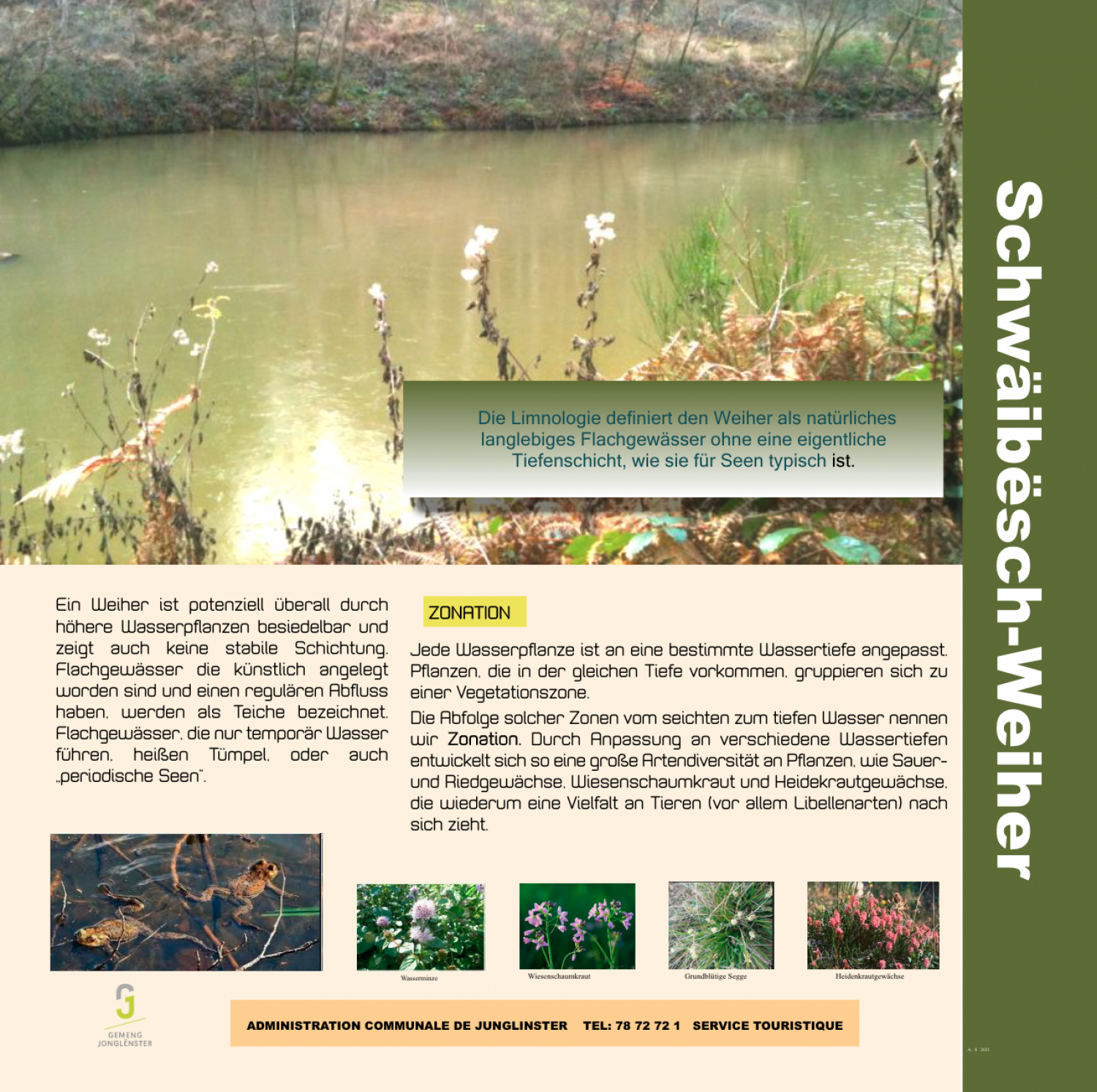Schwäibeschweiher

Limnology defines ponds as natural, long-lasting bodies of water without a deep layer typical for lakes. A pond can be occupied anywhere by higher water plants and also has no stable layers. Artificial bodies of water with a regular outlet are called pools. Bodies of water which only hold water temporarily are call “periodic lakes”. Zonation Every water plant is adapted to a specific water depth. Plants that occur at the same depth are group together into vegetation zones. The sequence of such zones from shallow to deep water is called zonation. Thanks to their adaption to various water depths, a great diversity of plant species develops, such as sedges and reeds, cuckoo flower and heather, which for their part attract a wide variety of animals (particularly species of dragonfly).
Download Flyer (PDF)